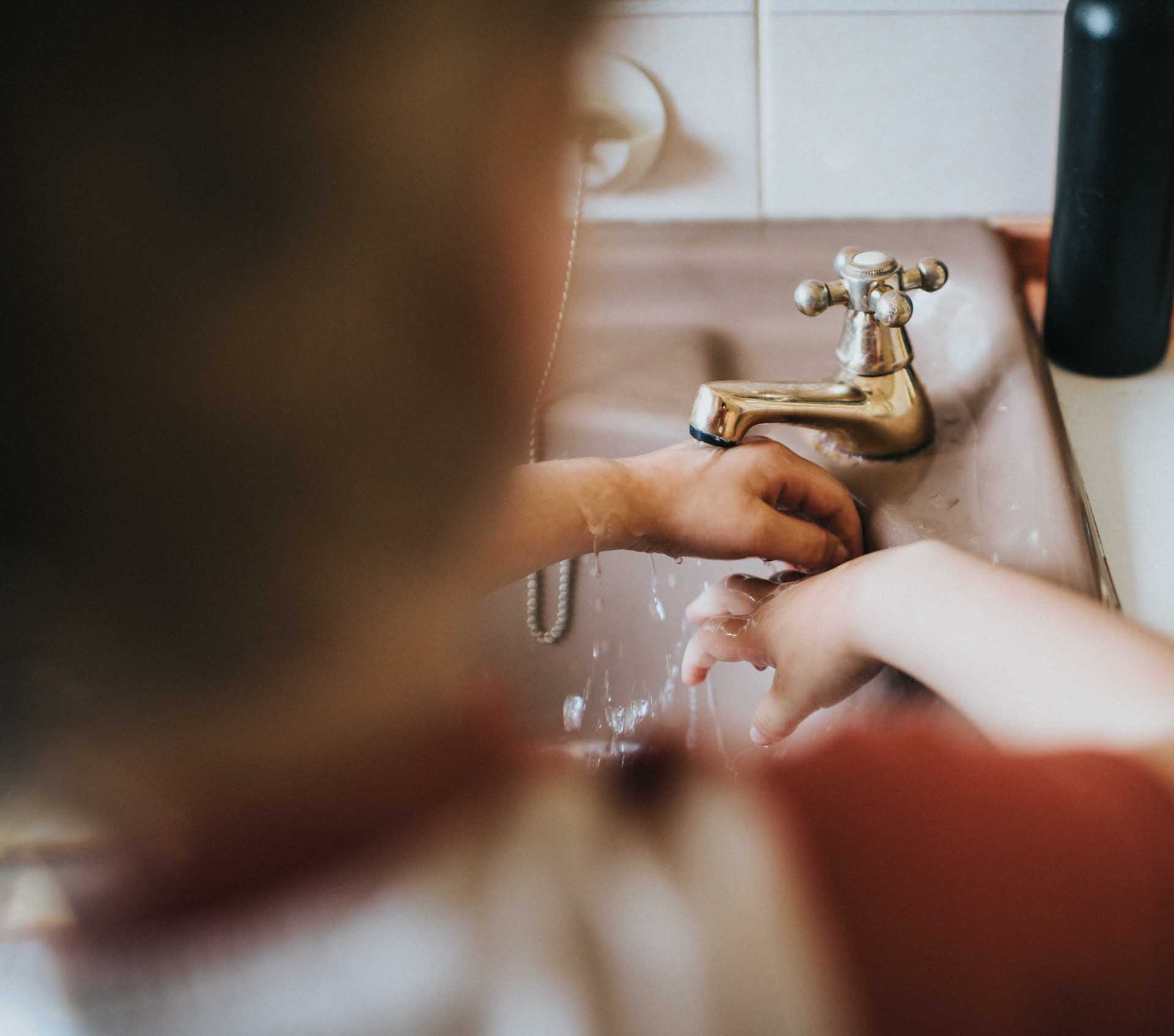Hand Washing for Children & Toddlers
Disclaimer: Dettol hand washes contain salicylic acid, do not use on children under 3 years old.
Why hand washing is important for kids (and everybody!)
Hand washing is an important behaviour to learn early. Establishing good hand washing habits in childhood is important not only for your little one but also for your wider family, to help prevent the germs from spreading.
Hands are one of the biggest carriers of germs, especially little hands that are busy playing and exploring. Those little hands can get into all sorts of germy messes on a daily basis, and pick up germs along the way. Fortunately, regular hand washing can help remove these germs.
Teaching children to wash their hands
When teaching a child about washing hands, it’s really important to make it fun and praise them when they’ve got it right. Give them lots of praise and encouragement, as well as frequent reminders, it’s a great way to help them repeat this simple but important habit.
Those young eyes are sharp and will pick up when you don’t wash your hands, so set a good example and always wash your hands when you should. You know how they often repeat things you say and do, so help them to follow your great hand washing example. Build it into your family’s routine and soon enough a good hand washing technique will become a habit, helping to keep your little ones protected from germs.
There’s more to hand washing than a quick rub with soap if you want to get your hands hygienically clean, so here’s your definitive guide to helping to keep little one’s hands clean.
When your child needs to wash their hands
Three key times for kids to wash hands is:
- Before eating any food
- After every time they have used the toilet or potty
- Before being involved in preparing any food.
Naturally, there are other times they’ll need to wash their hands too: if they come into contact with any germy messes, if they’ve been touching any cuts or grazes or even if they’ve been playing outside, it's always good to wash their hands.
Hand washing: 9 steps to clean hands
Did you know to wash your hands thoroughly, you need to rub your hands together using soap for at least 20 seconds before rinsing in clean running water to get them properly clean? Teach your little one to take the time to do it properly. Show the shapes with your hands that you’re making and get them to copy you.
How to hand wash
- Wet hands with clean, warm running water
- Apply a small amount of soap
- Rub your palms together (away from the water)
- Rub your fingers and thumbs and bits in between
- Rub your nails on your palms
- Rub the back of each hand
- Rinse with clean running water
- Dry with a clean towel or paper towel
- Praise your child for getting it right.
Remember that you are teaching your child a vital life skill that will help establish good habits for the rest of their life.
Hand washing activities for toddlers
Make a hand washing chart
One easy way to make hand washing fun for kids is to set up a hand washing chart with the key times your children should be washing their hands at home with soap and warm water. There doesn’t need to be a prize but your children will love ticking off their own hand washing chart as a visual reward for their accomplishment.
Sing a song
Making sure your children wash their hands with soap and water for the recommended 20 seconds is important to help prevent the spread of germs. One good trick is to get into the habit of singing a song while your children wash their hands – twice through Happy Birthday works perfectly. When they’ve finished singing they will know they’ve washed their hands for the right amount of time. The great thing about this method is your children can take it anywhere with them - at school, at a friend’s house and in any public toilets.
Play a game
If getting your children to wash their hands feels like a bit of a battle, make it into a game. Encourage your children to use soap as well as water by teaching them about germs in a visual way. Try sprinkling some glitter on their hands to represent the ‘germs’ so they can see how much easier it is to wash the ‘germs’ off with soap.
What if soap and water aren’t available?
While soap and running water are the ideal way to clean hands, they aren’t always available. In that case, a hand sanitiser with at least 60% alcohol will also help kill the germs. Hand sanitiser may not work well if hands are visibly dirty though, in which case you’ll still need to use soap and water.
To use hand sanitiser properly, use about half a teaspoon and rub your hands together, covering all the surfaces of your hand, including between your fingers. Don’t wipe it off - keep rubbing until your hands are dry, probably about 20 – 30 seconds.
RB-M-14034
First published:
Last updated:
